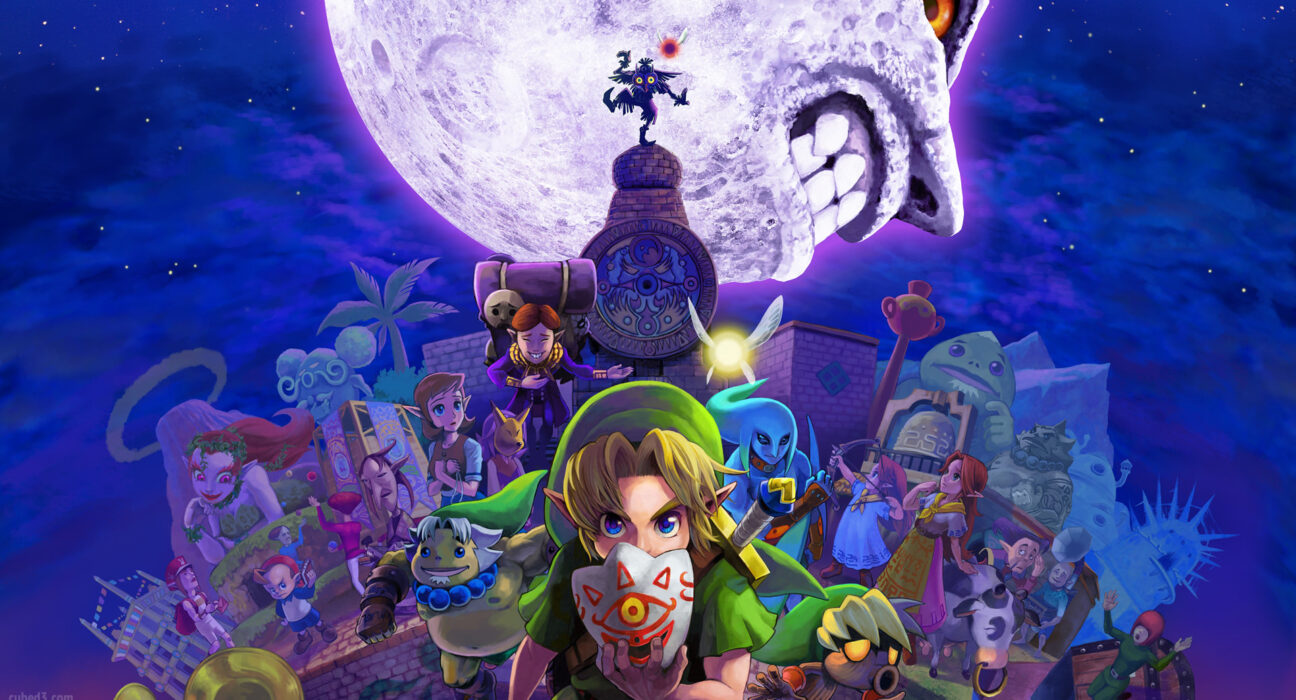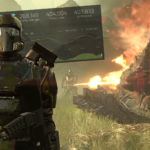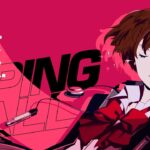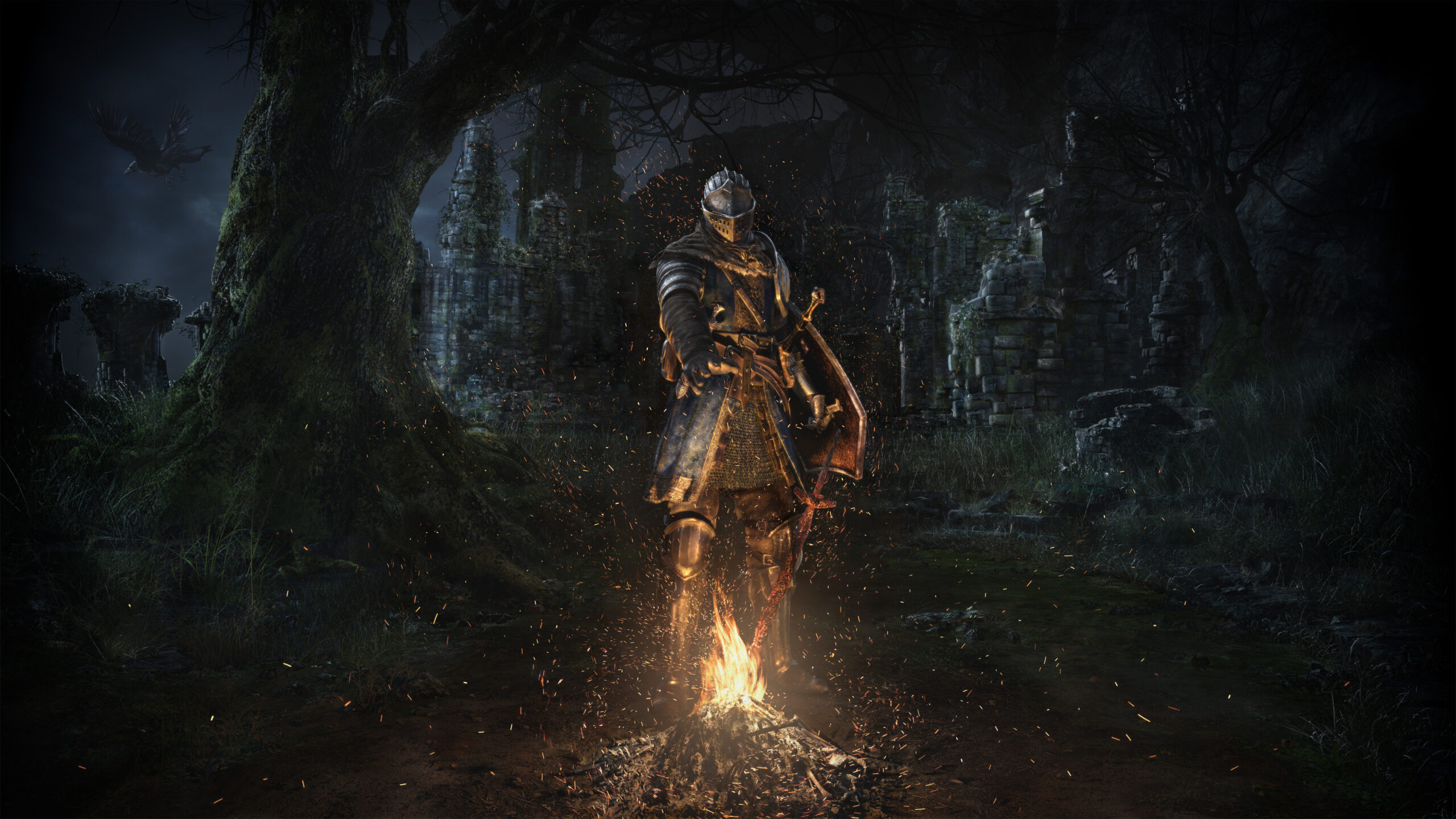This article was originally posted on September 26, 2019.
One of my lesser-vocalised loves for gaming is Nintendo’s The Legends of Zelda IP. My first LoZ game was Oracle of Seasons for the Game Boy Color (though it irks me to not write “colour”) and my first 3D Zelda experience was not until Twilight Princess on the Wii, and even then it wasn’t for a while after it came out that I actually played it. This meant I missed out on a whole lot of Zelda growing up, but I did not let that stop me from falling in love with the series. Majora’s Mask is the one Zelda game that I really, REALLY wanted to play but never had the means of playing until it came out on the 3DS. It’s also a game that I’ve struggled to finish for a variety of reasons, the first of which stems down to the circumstances of how I got the copy, but that is beside the point here. After playing through it a variety of times and having some long-winded discussions with friends who appreciate the LoZ games the same way that I do I feel confident to take a look back at one of my most adored games around, analysing what made it the masterpiece of a game it was. Let’s go over how Nintendo brilliantly used a mix of world-building, design, music and contrast to create one of the darkest, most tense games I have ever played.
I’ll preface what I’m about to say with this: LoZ Majora’s Mask is dark. It may look like a kid’s game, but when you actually stop and take a look at it, it is anything but. The game constantly conveys an atmosphere of death, loss and tension with each milestone and notable event cementing the idea that no matter what you do, Termina is in turmoil. Hell, the game starts off with causing the death of an innocent Deku Scrub, a realisation that you don’t really grasp until you complete the game.
With that out of the way, we’ll begin with the stories of Majora’s Mask. Now, why “stories”? Why not analyse the singular path that you, in the shoes of Link, take to inevitably save the world? For a lot of games, this is a very easy thing to do. However, with Zelda games in general, let alone Majora’s Mask, this is a bit of a harder thing to do. Excluding games like Twilight Princess and Skyward Sword, Zelda games often opt to tell a story through the world rather than through your actions into one over-arching plot. Majora’s Mask does this tenfold. If you were to take the story of Majora’s Mask at face value, the game would seem rather dull and uninventive. A kid wearing a creepy mask has stolen the Ocarina from your possession, turns you into a Deku Scrub and is bringing about the world’s destruction by colliding the moon with the land, dooming the region of Termina’s existence and any who reside in it. Upon chasing the kid into Clock Town you meet the Happy Mask Salesman who explains to you that the very same kid who stole your Ocarina is also the one who stole a very dark and corrupted mask from him: Majora’s Mask. He strikes an accord with you but with a caveat.
Once you reobtain your Ocarina you play the Song of Time, thrusting you back by three days and you find yourself back at the bottom of the Clock Tower where you met the Happy Mask Salesman. He teaches you the Song of Healing and informs you that the aforementioned caveat is that he is leaving in three days and you need to return his mask to him within then. The reasoning for this is written on the walls (figuratively). You’re not really given a reason to care about the world or the people because you don’t know them and you aren’t even from the land. Your only real motivation to stop the impending doom is your want and need to kick the masked kid’s butt for being a jerk. For a lot of games, that would be all there is to the world. There would be some side quests and a small amount of those side quests might have some impact, but at the end of the day, they’re just a distraction from the plot. Where Majora’s Mask differs is how it integrates the story of the world and characters around you as the motivation to be the hero. By completing the side quests you progress through their stories and learn why their existence is valuable and meaningful.
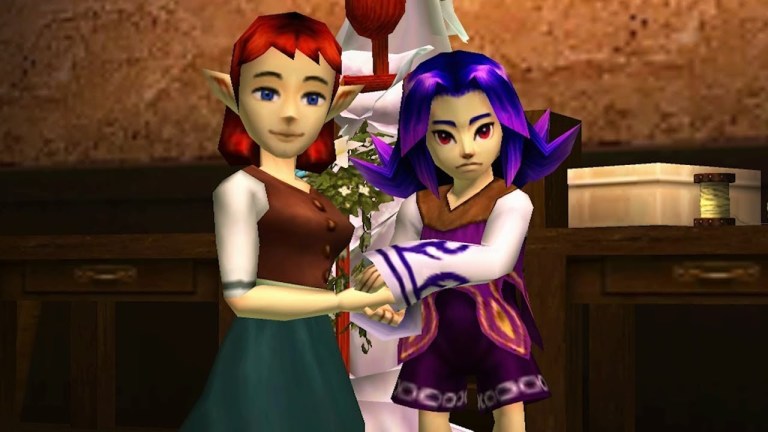
Sourced from Den of Geek
We’ll start with what I would call THE quest to complete in Majora’s Mask: the Anju & Kafei quest (more commonly known as Anju’s Anguish as of the 3DS remake). Now, there are a number of reasons why this quest is not only one of, if not, the best questline in Majora’s Mask, but arguably the best questline in any Zelda game ever (a pretty good mark to hit on your second entry into the series if I do say so myself), including its design, relevance, impact and writing. I’ll get to why it’s so good from a design standpoint later, but for now, we will just be focusing on the actual storywriting for this quest and how it impacts the atmosphere of Clock Town, the central hub for Majora’s Mask. The quest sees you interacting with a variety of the game’s characters and your aim is the reunite two star-crossed lovers named Anju (F) and Kafei (M). These two lovebirds long to be wedded to each other but Kafei has gone missing. Visiting the Mayor’s Residence in East Clock Town causes the player to meet Madame Aroma, the mother of the missing boy, Kafei. After explaining that her son is missing, she concludes that you should investigate Kafei’s whereabouts.
I’m not entirely sure what drives a woman to entrust the investigation regarding the cause and result of her son’s disappearance in the hands of a ten-year-old kid from a different land, but that is neither here nor there (the characters of Zelda seem to entrust everything in a blonde kid with a coloured tunic). As the quest progresses, you unravel the story of these two lovers, separated by unfortunate circumstances and my goodness is it such an enthralling tale. You learn that Kafei had his own run-in with the Skull Kid, the main antagonist of Majora’s Mask, which resulted in a spell being cast upon him that wound the clock back on his age, reverting him to his youthful state. Due to this, Kafei has gone into hiding out of sheer embarrassment and sought a cure from the Great Fairy of Clock Town. During this his Sun’s Mask was stolen, part of two masks which are used in wedding ceremonies in the land of Termina. This last part is why he shelters himself away from everyone else – he seeks a way to reclaim his mask and return to his adult form.
Engaging with Anju also convinces him to bestow the Pendant of Memories unto you (not to be confused with ‘mammaries’, you sicko) with the request that you deliver it to his betrothed, as a token of affection. Doing so convinces Anju to remain in town on the third day, the day when Clock Town- nay- all of Termina is fated to meet its end. Returning to Kafei’s hideout on the third day will see you meet with the man who runs the “Curiosity Shop”, a shop that sells stolen and unique items. He’s a friend of Kafei’s and explains to you that the Sun’s Mask thief, Sakon, came into the shop last night and that Kafei has gone in pursuit of him in the Ikana Canyon. For most players, this will be the second time you encounter Sakon with the first being at around midnight on the first night, saving the bomb shop lady from having her Big Bomb Bag stolen by the flamboyant thief.
Not only is this writing good, but it also links the characters to the world in a surprising way. Up until this point, players would have just brushed off Sakon as the Bomb Bag Thief guy and nothing more, but this simple plot point adds consistency to a side character, making his actions (and yours) more meaningful. Saving the Bomb Shop Lady will cause Sakon to not have anything to sell to the Curiosity Shop meaning that Kafei won’t find him, which in turn means that he can’t chase him to try and retrieve his mask. Allowing everything to go as planned, meeting Kafei in Ikana Canyon will see you pass a challenge of sorts and help him retrieve his mask. Kafei rushes back to town and with just an hour and a half left before the moon comes crashing down, both Anju and Kafei stay true to their vows, embracing the impending doom in each other’s arms. That’s just ONE quest.
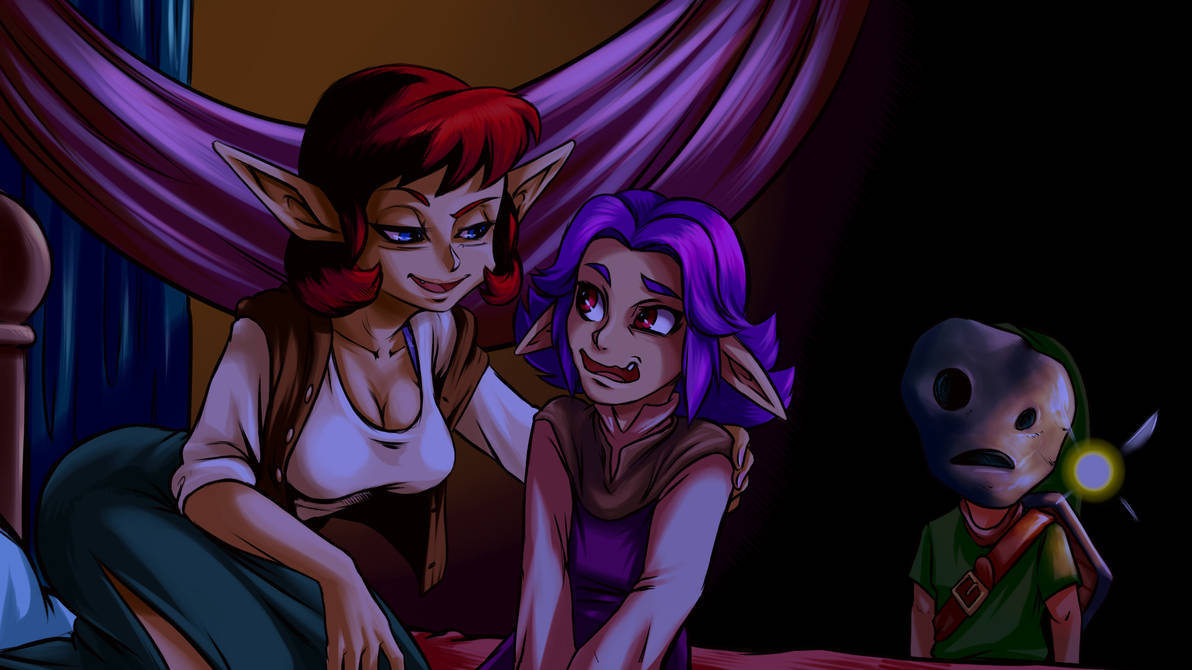
Sourced from Deviantart user Gannadene
Not all of the questlines, in fact, a majority of them, are not written as well as the Anju & Kafei questline, but that is not to say that they aren’t worth your time. Even little things that seem short have a lot behind them. The best example of this is the Music Box House in Ikana Canyon. There is a lone house in the middle of the now-deserted Ikana Village which is surrounded by Gibdos (mummified undead) and a little girl with her father are sheltered inside. The little girl (named Pamela) has stowed her father away after he became cursed by the spirit of the composer, Sharp, causing him to gradually take the form of a Gibdo. So this little girl not only has to lock her father away who is gradually dying from a curse, but she also has to protect both of them from the unending parade of Gibdos right outside their house. Let that sink in, everything around her is steeped in death and one wrong move will spell her end. That’s… haunting. I can’t imagine what would happen if Link didn’t intervene to save the father-daughter duo. To further add to this, saving them by healing his soul doesn’t stop the creepiness. Talking with Pamela after you have saved them will cause her to thank you but also cause her to bar you from talking to her father. She fears that if he catches on to Link’s power he will want to investigate and research, causing him to do even more crazy things like what led to the Gibdo curse placed on him.
Completing the game sees you taken through all the different areas and characters that you have impacted. The monkey is getting along with the Dekus, the Gorons are living safely and happily in their village at Snowhead, the Zora band known as the “Indigo-Go’s” successfully have their performance for the Carnival of Time being held in Clock Town on the count of Lulu regaining her voice, Pamela and her father are playing outside of their house and are free of danger, Anju walks out of Clock Town in her wedding dress and is ready to be married to Kafei. The game has such a satisfying ending and is so well crafted that it is one of the most subtle yet impactful games in terms of writing.

Sourced from r/AstralObservatory
Majora’s Mask is a very weird Zelda game in the sense that it is very much an outlier with its overarching design. Most Zelda games have a main gimmick that the developers have built the game around: Ocarina of Time had time travel, Twilight Princess had Wolf Link, and Wind Waker had the King of Red Lions/open seas, but none of them were able to communicate the atmosphere and ideas of their respective games as effectively as the 3-day time loop from Majora’s Mask. On paper, the idea of what’s basically Groundhog Day, whereby players are restricted to the game’s events occurring during just 3 days seems like a pretty cheap idea. It would be very easy to interpret the design as lazy design at face value, but when you couple it with the writing and the purpose of the characters within the world, it all starts to fall into place. You have to relive the tension of the looming presence of the moon, and more often than not you will have to revert back to the first day after cutting it close with some of the dungeons and quests in terms of time (the previously discussed Anju & Kafei questline ends with basically 5 minutes of time left). It sets a really sombre tone as the concept of object permanence just does not exist in this game due to everything being reset constantly. It also means that the stakes of failure are potentially high. Taking too long in a dungeon may force you to revert back to the first day, resetting everything in a dungeon you have not finished yet.
Even from personal experience this just sets an incredible atmosphere. I remember having to reset the Stone Tower dungeon, one which is potentially the most unforgiving of the lot due to its complexity in design. Better yet, on my first playthrough, I was freaking out during the Great Bay Temple because I insisted on collecting all the fairies and I couldn’t figure them out. It wasn’t until the last 30 minutes (which goes faster than your normal clock) that I managed to find the last fairy I needed, resulting in a frantic rush back to Clock Town while making sure everything I needed to get done had been done. In a way, it’s similar to the last 100 seconds of a 2D Mario game, where you are forced to rush or risk failing entirely.
The aforementioned Anju & Kafei questline is by far the longest questline of the game, and it often requires the player to go through multiple resets unless they really know what they are doing. At the bare minimum, the player is required to have the Hookshot, among other things, which is an item found around halfway through the game, if not later. It’s one of the few questlines where the choices you make in the world can have a major impact on how it turns out. Rescue the bomb lady and cause the shady crook, Sakon, to not show up at the Curiosity Shop during the passing of day two to day three. On the final day, give Kafei’s letter to his mother directly at the Milk Bar and receive an empty bottle as her thanks, give the letter to the Postman and he’ll deliver it for you – following him allows him to finish up his job and leave Clock Town to try and survive the impending impact, rewarding you with the Postman Hat. Everything about this quest is so beautifully and meticulously designed.
From the weight that your choices have, to the clever use of familiar environments and secrets hidden in plain sight, this singular questline is designed not in a way that overshadows the rest of the game’s design, but rather complements it perfectly by placing the player in the shoes of a hero trying to heal the wounds of a relationship, changing the pace of the rest of the game. It’s this contrast in design and pacing creates such an impactful and meaningful questline which enhances the potency of the rest of the game’s design. Even going as far as making the player wait until the very last hour of the three-day cycle to complete the quest and see the lovely pair be reunited and bonded in matrimony.
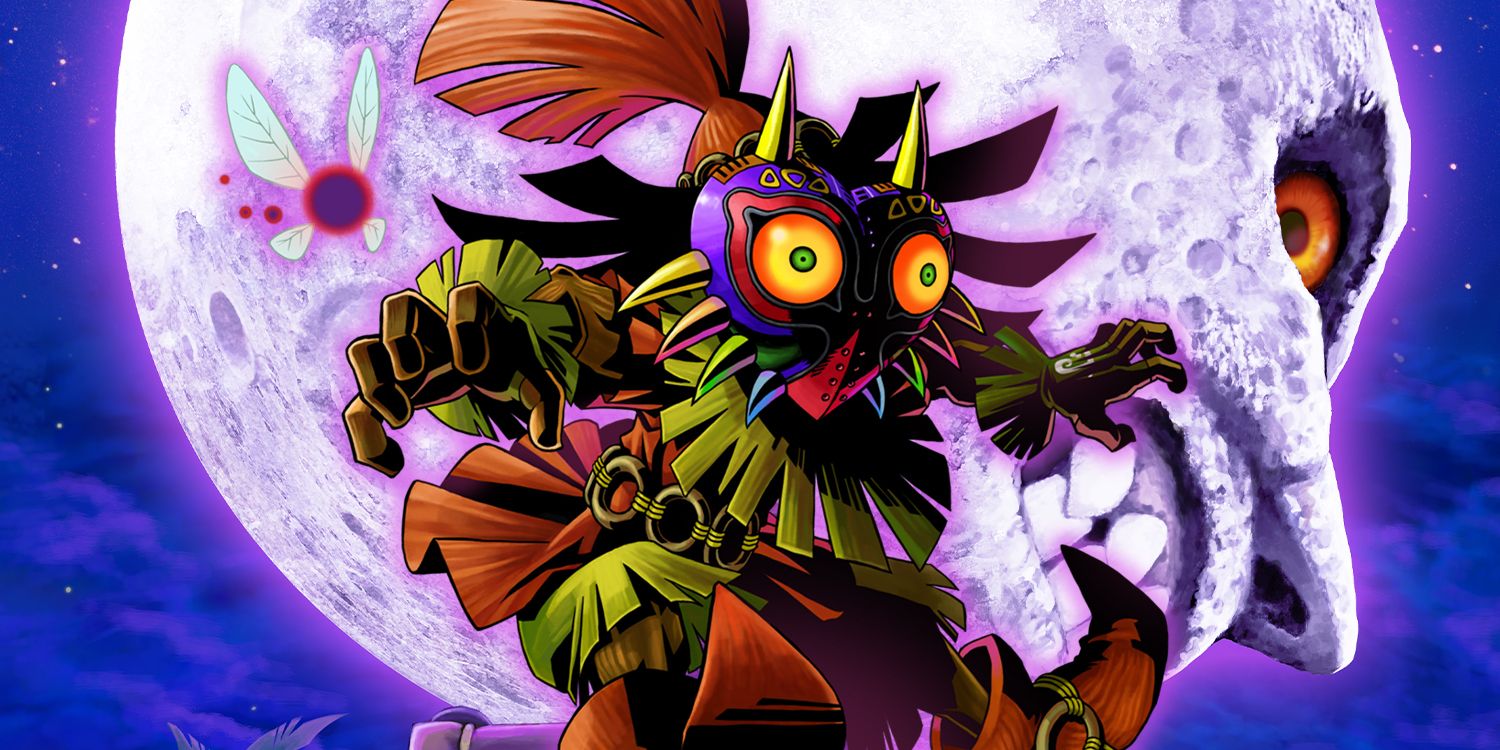
Sourced from Screen Rant
Anju & Kafei isn’t the only way that Majora’s Mask’s design excels. If you want prime examples of excellent level design, look no further than the dungeons in this 3D Zelda game. More specifically, Stone Tower Temple. This dungeon makes use of practically every skill that you would have learned leading up to this point and turns it upside down, literally. Majora’s Mask was already making really effective use of 3D space in its earlier dungeons and stages, the Gerudo Pirate Fortress being a great example of this. Requiring the player to look around and find creative solutions to traverse the environment through the use of the Hookshot, Majora’s Mask asks the player to keep a variety of its key items in mind when trying to solve its puzzles, both in the short-form and the long-form sense. Stone Tower Temple is the best example of the game’s design challenging players with puzzles that are solved with knowledge of all the game’s prior mechanics. In a way, it allows you to relive the gratifying moments when you originally solved the earlier puzzles by having puzzles that use the same mechanics but up the ante in terms of complexity and scale. The aforementioned Hookshot has the unique ability to pull the player towards an anchor point. A simple concept, yes, but when put into practice it can be used to hide the key to a puzzle in plain sight. Couple that with the Light Arrows which flip the entire dungeon around and you have some of the best use of 3D space around.
One of the bigger, and arguably better, changes made to Majora’s Mask with the 3DS remake has to do with the bosses. In the original release of the game, the bosses weren’t that puzzling. The game’s first boss, Odolwa, could be easily beaten by more or less hacking and slashing at him. In the 3DS remake, the player is required to use the skills and abilities present at that point in the game (the Deku mask and Deku Nuts) to force a weak spot to be revealed. Do enough damage to the weak spot and the boss will be defeated. While a lot of purists will say that this change is terrible, in reality, it’s a design point that is present in most Zelda games and so it’s entirely appropriate that this is the case now. Zelda games love to test the player’s familiarity with the game’s mechanics, both old and new, with the hopes of ensuring that the player never forgets about the mechanic(s) in question as you never know when they’ll be used.
The real hero of Majora’s Mask’s design is definitely its central mechanic, however. The three-day cycle really ties in the raw experience and theme of Majora’s Mask – futility and failure. As outlined in the stories of Majora’s Mask, the game constantly puts forth this haunting, dark tone there isn’t really a point where this isn’t apparent. From using the Song of Healing to heal Mikau, the Zora who you find just offshore in the Great Bay, by way of laying him to rest, to the way that even though you fight arduously to reunite Anju & Kafei only for them to forget who you are when the cycle repeats itself. The game lifts you up with these incredible moments only to pull you back down with the grim reality that nothing you do will really have an impact while Skull Kid still poses a threat with Majora’s Mask because all your hard work will have to be reset. Even if you do manage to save Termina, it’s highly likely that those meaningful decisions you made for the people of the region won’t have any impact due to time constraints in the cycle. Do you put the individuals first and heal broken hearts or do you save the land but leave sadness to run its course? Majora’s Mask often doesn’t afford the player the luxury of combining both of them without incredible knowledge of the game beforehand, so the average player or anyone who plays it for the first time will be met with both relief and regret when finally rolling the credits. It’s this beautiful dissonance that can only be achieved when the writing and the design of a game are in complete harmony with one another. Anything less and the stronger of the two will expose the weaknesses of the other.

Sourced from Deviantart user ToadJD
Music is one of the most powerful tools of communication, not only in games but in life as well. Things like key, tempo, density and tone colour play a part in creating an incredibly expressive and nuanced artform – an artform that enhances the experiences found in games. This is something that The Legend of Zelda series is often praised for. Without exception, every Zelda game uses music as a form of communication to convey various and often complex themes. Composer Koji Kondo has cemented himself as one of the best composers in the video game industry, due in part to his work on the Zelda series. There is no better example of this than with Majora’s Mask, which effectively uses a combination of musical techniques to create an atmosphere and tone that is unparalleled, even today.
We’ll start with perhaps one of the more chipper pieces of music found in Majora’s Mask: the Clock Town music. Unlike a lot of the more powerful pieces in Majora’s Mask, Clock Town’s music is written in a major key, meaning that a lot of the chord voicing and musical phrasing is of a rather bright manner when compared to the sombre tone of the game it is placed it. This piece of music works in contrast to the state of the world and communicates what is happening in Clock Town. The end of the Termina is coming and the inhabitants are none the wiser. They proceed with their daily lives and routines in ignorance of the impending doom. It is not until the second day that things begin the change. While the music is effectively the same, the change in tempo during the second day for Clock Town tells a story of panic; the residents have turned their gaze at the sky only to see the moon plunging towards them. The atmosphere of the town begins to shift. Residents go about their lives more hurriedly, some use the time to pack their things and say goodbye, whereas others use the time to tie up loose ends. Clock Town is no longer this central hub in Termina, where the people living there can be at peace. Instead, it’s the focal point of contention, parties that are usually friendly to one another have become increasingly hostile (just take a look at the interactions between the contractors and the guards in the mayor’s office) and the people are beginning to show how scared they are. All of these changes are consistent with the faster, frantic music. You genuinely feel like something terrible is happening and that you should do something about it.
Going beyond Clock Town, you’ll find a handful of melodies that Link learns with his Ocarina. The two most important pieces are the Song of Time and Song of Healing. The latter is one of the most brilliant uses of contextual dissonance that I have ever seen. To the unsuspecting, the Song of Healing should be a bright, joyful piece that instils happiness. However, this song is anything but that. Featuring the use of a minor key, the Song of Healing is an incredibly sombre piece that fits not only the atmosphere of the game but also manages to fit every situation that calls for the harrowing melody’s use. This musical piece is often employed when Link needs to help people impacted by the turmoil of Termina; like the Darmani (the hero of the Goron people in Snowhead). Most uses of this song see a person’s soul laid to rest, leaving a void in the world where they once lived. The Deku kid leaves behind a grieving father who constantly mourns the death of his son. Darmani’s soul, entrapped in his burial site, embodies the hero in the green tunic and helps his own people, but at the end of the day, the Gorons are only reminded of the hero whom they tragically lost. Mikau leaves behind Lulu, the singer of the Zora band The Indigo-Go’s as well as seven Zora eggs. While it’s never actually stated that Mikau is the father of these eggs, he is portrayed as a father figure with the closeness of his bond to Lulu. In almost every instance, the Song of Healing heals those afflicted by redirecting its pain from one individual to the rest of the world.
Even if you remove all context from the various pieces of music within Majora’s Mask, the songs are composed to contrast against their originators. The aforementioned Song of Healing is effectively Saria’s Song played in reverse. The songs have a double entendre of sorts that Nintendo is willing to explore. There are even gameplay elements that use this concept, such as the Song of Time including the Reverse Song of Time that slows down the rate at which time passes, which makes it easier for the player to achieve more within a three-day cycle. It’s decisions like these that make the very intentional music choices considerably more meaningful.
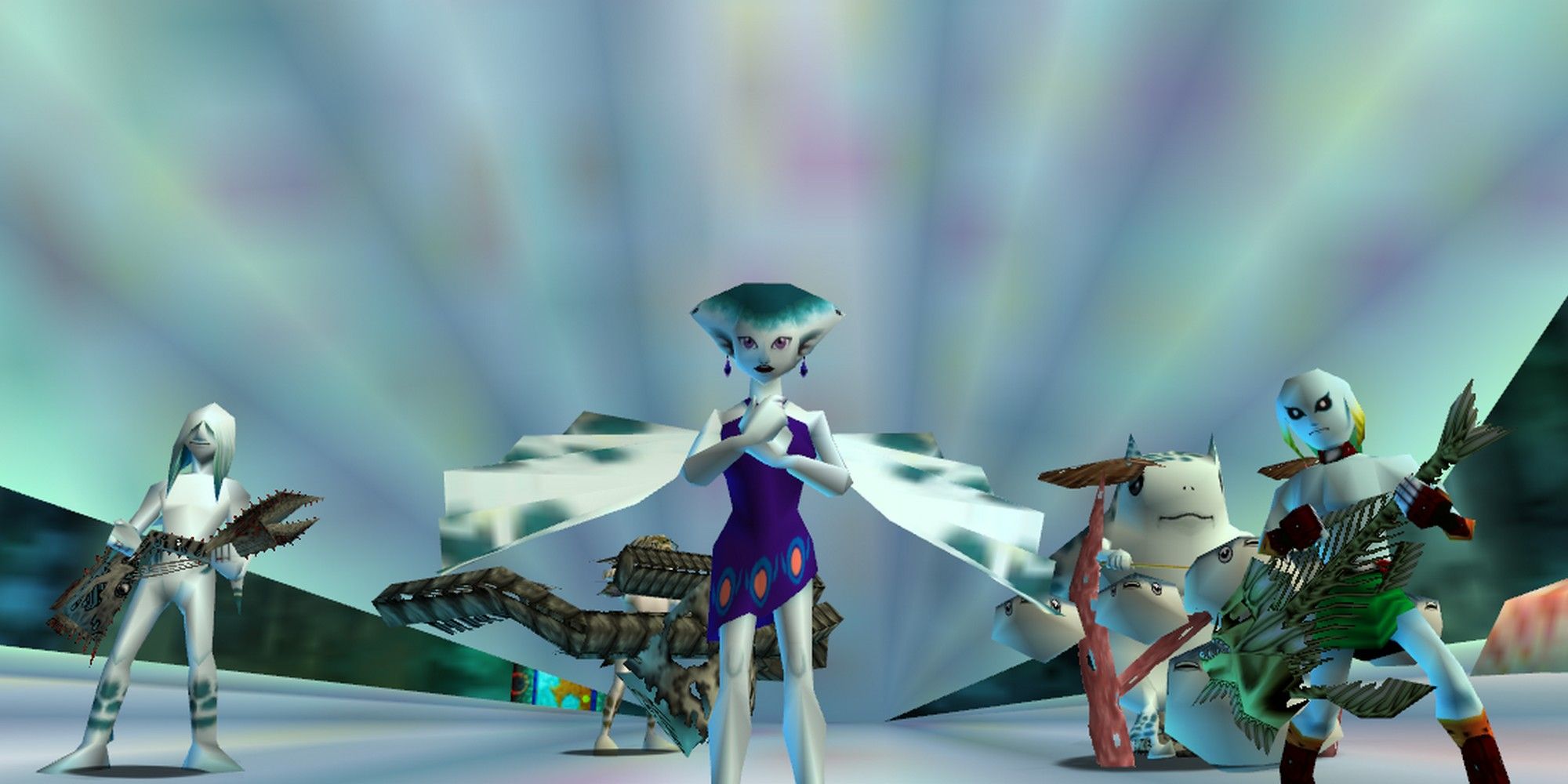
Sourced from The Gamer
Majora’s Mask has some excellent dungeons, few as they may be, and each dungeon’s atmosphere is built with music befitting the atmosphere. Even little things like the instrumentalisation of each song suit the dungeons and enhance the atmosphere. A personal highlight for me is the music for the Snowhead Temple, which features a bright, playful tone that also hints at its sly, ominous nature that lies beneath the mask (pun intended).
The way the music is written and used in Majora’s Mask just hits a point that most games do not. While most games employ an effective use of tonality and placement with their music, they often fall short when it comes to density and complexity. It doesn’t take much effort to see that the most well-known pieces of music in gaming follow one fairly simple rule; a basic melody accompanied by chord and note phrasings that don’t detract from the intended mood. This often means that the most iconic songs in gaming are also the catchiest. Take a look at the theme music for the Super Mario games, Tetris, Sonic the Hedgehog or even Doom – none of these themes are so busy as to become distracting. This is not to say that busier pieces of music are bad but the simpler pieces of music fit Majora’s Mask better than busier pieces ever could. The simplicity of the music communicates how cold and empty the land of Termina can be when you are travelling between locations/landmarks.
If you’ve played through Majora’s Mask, you would be aware that each key area is in turmoil and you need to help the people who are affected by whatever is plaguing each area. While these problems are active, the game plays a unique and unsettling piece of music. It’s a playfully dissonant piece that communicates the idea that something is awry and whatever sinister force is causing havoc on the land needs to be discovered and stopped. The most interesting part about this music, however, has to do with its use of different instruments. While subtle, the mysterious track that plays in the plagued areas has a unique instrument that corresponds to each area. It’s easy to overlook, at least until you hit the Great Bay, where the tone of the instrument can be different from the rest of the game. It’s a subtle difference that adds depth to the world and its problems – all the plagues are connected to the overarching problem facing Termina.
One of the most chilling pieces of music that Majora’s Mask has to offer is the Final Hours track which plays in… well, the final in-game hour of the three-day cycle. As discussed earlier, the music in Clock Town becomes progressively more frantic as the moon draws closer to the land. When you hit the last hour of the in-game clock, the entire atmosphere shifts to a haunting, melancholic tone. While the game regularly communicates these themes through the music, the Final Hours track overrides every piece of music in the game. It’s a stroke of contextual genius that communicates the theme of impending doom, especially when you consider that to fight Skull Kid and Majora you need to be in the last hour of the cycle. You have to either beat these two antagonists and save Termina, or accept that you will meet with a terrible fate.

Sourced from Kotaku AU



